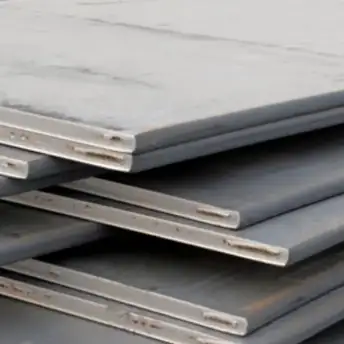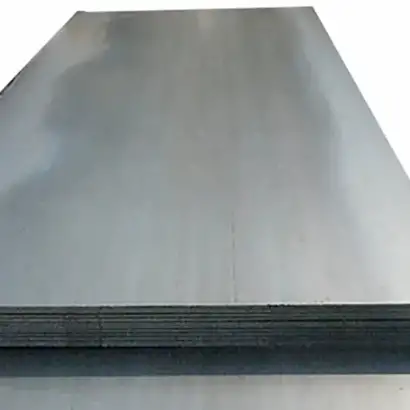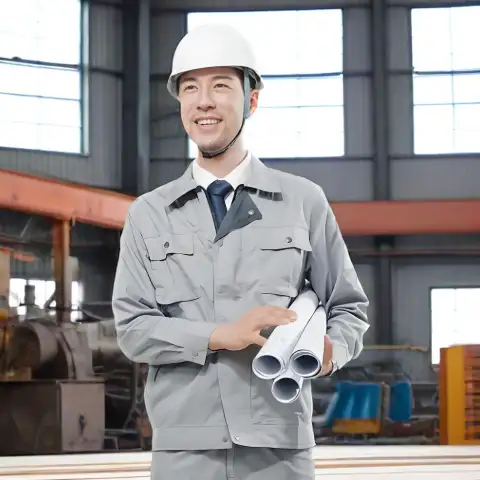A36 and A500 steel are both highly popular and versatile materials used in construction and manufacturing. While A36 is primarily utilized in general structural applications, A500 is more suitable for structural steel pipes and hollow sections. The key differences between A36 and A500 steel lie in their chemical composition, mechanical properties, applications, and welding capabilities. A36 is a carbon steel primarily used for structural purposes, whereas A500, made from high-strength cold-formed carbon steel, is primarily used in the manufacturing of pipes and hollow sections.
What is A36 Steel?
A36 steel is a carbon steel grade that is one of the most commonly used steels in the world. It is primarily used for structural applications in construction, bridges, and buildings due to its strength, weldability, and cost-effectiveness.
Key Characteristics of A36 Steel:
-
It is a low-carbon steel, which means it has a carbon content of approximately 0.26%.
-
A36 steel is known for its excellent weldability and machinability.
-
It offers moderate strength, making it suitable for use in structures that do not require very high strength materials.
-
Typically available in plates, bars, and shapes, A36 steel is versatile and can be cut, welded, and machined easily.
What is A500 Steel?
A500 is a specification for cold-formed welded and seamless carbon steel structural tubing. It is often used in the construction of buildings, bridges, and other large infrastructure projects where high strength and durability are required.
Key Characteristics of A500 Steel:
-
A500 is a high-strength carbon steel used in the production of structural tubing.
-
It is commonly used for both welded and seamless tubing applications.
-
A500 steel has superior strength and is ideal for applications where strength and durability are critical.
-
Available in a wide range of sizes and shapes, A500 steel is often used in heavy-duty projects.

Chemical Composition Comparison: A36 vs A500
The chemical composition of steel plays a critical role in determining its mechanical properties, such as strength, ductility, and weldability. Below is a comparison of the chemical composition of A36 and A500 steels:
| Element | A36 Steel (%) | A500 Steel (%) |
|---|---|---|
| Carbon (C) | 0.26 | 0.26 |
| Manganese (Mn) | 0.60 - 0.90 | 0.60 - 1.35 |
| Phosphorus (P) | 0.04 max | 0.035 max |
| Sulfur (S) | 0.05 max | 0.035 max |
| Silicon (Si) | 0.40 max | 0.10 - 0.30 |
| Copper (Cu) | 0.20 max | 0.20 max |
As can be seen, both steels have similar carbon content, but A500 has a slightly higher manganese content, contributing to its superior strength and durability compared to A36.

Mechanical Properties: A36 vs A500
The mechanical properties of A36 and A500 steels differ significantly, mainly due to the intended applications of these materials. Here's a comparison of the two:
| Property | A36 Steel | A500 Steel |
|---|---|---|
| Yield Strength (ksi) | 36 | 46 - 50 |
| Ultimate Tensile Strength (ksi) | 58 - 80 | 58 - 80 |
| Elongation (%) | 20% min | 20% min |
| Modulus of Elasticity (ksi) | 29,000 | 29,000 |
| Hardness (Rockwell B) | 95 | 95 |
A500 steel generally exhibits higher yield strength, making it better suited for heavy-duty and high-load applications. The ultimate tensile strength of both steels is comparable, but A500 is designed to perform better under stress.
A36 vs A500 Steel Specs
A36 Steel Specifications:
-
ASTM A36 Standard Specification for Carbon Structural Steel
-
Thickness: Available in thicknesses ranging from 3/16" to 8" (for plates).
-
Shape: Available in plates, bars, and structural shapes.
-
Length: Plates typically range from 8’ to 24’ in length.
A500 Steel Specifications:
-
ASTM A500 Standard Specification for Cold-Formed Welded and Seamless Carbon Steel Structural Tubing.
-
Diameter: Available in square, rectangular, and round tubing.
-
Wall Thickness: Ranges from 0.500" to 0.125".
-
Length: Custom lengths are available based on project requirements.
Applications of A36 Steel
A36 steel is widely used in a variety of industries and applications, including:
-
Construction of buildings and bridges.
-
Fabrication of heavy machinery and equipment.
-
Manufacturing of structural steel components.
-
Automobile and aerospace industries.
-
Tanks, towers, and pressure vessels.
Applications of A500 Steel
A500 steel is primarily used in structural tubing applications, such as:
-
Construction of building frames and structures.
-
Manufacturing of large steel supports and beams.
-
Automotive and machinery construction.
-
Infrastructure projects like bridges and pylons.
Can You Weld A36 to A500?
Yes, it is possible to weld A36 steel to A500 steel. However, some considerations should be taken into account:
-
Both steels have similar carbon content, so welding procedures for A36 can generally be applied to A500.
-
Preheating may be necessary to reduce the risk of cracking, especially when welding thicker sections of A500 steel.
Size and Weight Comparison: A36 vs A500
Here is a general size and weight comparison for both A36 and A500 steels:
| Steel Type | Size (Thickness, inches) | Weight (lb/ft) |
|---|---|---|
| A36 | 0.25 - 8.00 | 2.5 - 45 |
| A500 | 0.125 - 0.500 | 3.5 - 45 |
This table gives a general idea of the typical sizes and weight ranges for both steel types. A500 steel's structural tubing generally weighs more due to its higher strength and thicker walls.
Global Price Comparison for 2025
The prices for A36 and A500 steel can vary based on factors such as location, supply chain conditions, and order quantities. Here’s a rough comparison of the prices for both types of steel in 2025:
| Steel Type | Price (USD per ton) | Location |
|---|---|---|
| A36 | $700 - $850 | China (ex-works) |
| A500 | $850 - $1,100 | China (ex-works) |
Note: Prices may vary based on local conditions and volume orders. For the most accurate and up-to-date pricing, please consult your supplier or contact MWalloys directly.
FAQs
-
What is the difference between A36 and A500 steel?
A36 is a general-purpose carbon steel with moderate strength, while A500 is a high-strength structural steel used in tubing applications. -
Which steel is better for welding, A36 or A500?
Both A36 and A500 steel can be welded effectively, although A36 is more commonly used for general welding applications due to its versatility. -
Can A36 steel be used for heavy-duty construction?
A36 is suitable for moderate-duty construction, but for heavy-duty applications, A500 steel would be a better choice due to its higher strength. -
What industries use A36 steel?
A36 steel is used in construction, machinery, and automotive industries, among others. -
Is A500 steel more expensive than A36?
Yes, A500 is generally more expensive due to its higher strength and the fact that it is used in specialized structural applications. -
Can A36 steel be used in bridge construction?
Yes, A36 steel is commonly used in bridge construction, although A500 may be used for more demanding applications. -
What is the yield strength of A500 steel?
A500 steel has a yield strength of 46 to 50 ksi. -
Can A500 steel be used for pipes?
Yes, A500 steel is often used for structural tubing and pipes. -
How do A36 and A500 compare in terms of elongation?
Both A36 and A500 steel offer a minimum elongation of 20%, making them suitable for ductile applications. -
What is the typical size range for A36 steel?
A36 steel is available in thicknesses from 3/16" to 8" and various shapes like plates, bars, and beams.

